Why bother with store-bought yeast when you have your own sourdough starter in the fridge? Learn how to make and maintain this old-fashioned leavener with only three ingredients: flour, water and time.
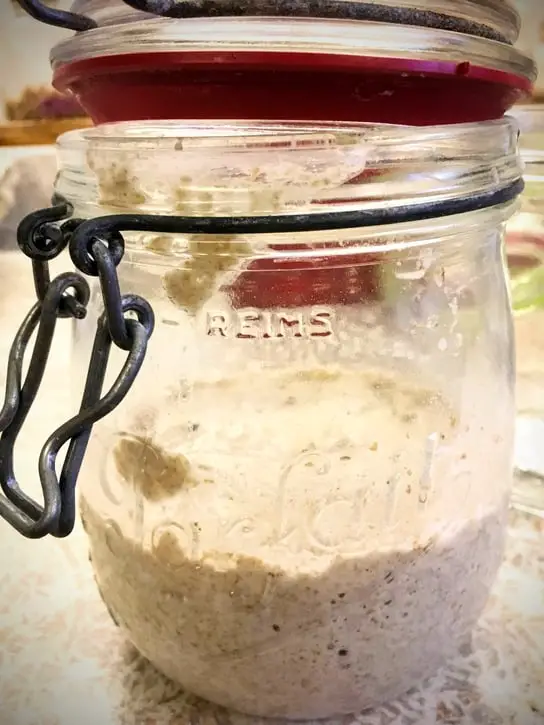
SOURDOUGH: A NOURISHING TRADITION
Sourdough first came on my radar when I read through Laura Ingalls Wilder’s Little House series as a child.
I would have given almost anything to take a bite out of one of Ma Ingalls’s good sourdough biscuits!
Indeed, sourdough has been around for a long time, much longer than most people would guess.
Did you know that sourdough bread dates back to at least 3700 BC?
While sourdough was shelved away for a while (like a number of other old-fashioned skills and traditions) it is experiencing a resurgence.
When yeast was hard to come by in some areas, sourdough was back in popular demand, and it’s no small wonder why!
MAKING AND MAINTAINING A SOURDOUGH STARTER VIDEO
In the span of a week, you can make your very own sourdough starter. Learn all about how to make, maintain, and troubleshoot a sourdough starter in this video. If you like my sourdough video, be sure to subscribe to my YouTube channel to find more like it!
This post may contain affiliate links, meaning that if you choose to purchase something after clicking on one of the links in this post, I may earn a small commission at no additional cost to you.
RELATED: How to Make Beet Kvass (a traditional fermented drink)
WHAT IS A SOURDOUGH STARTER?
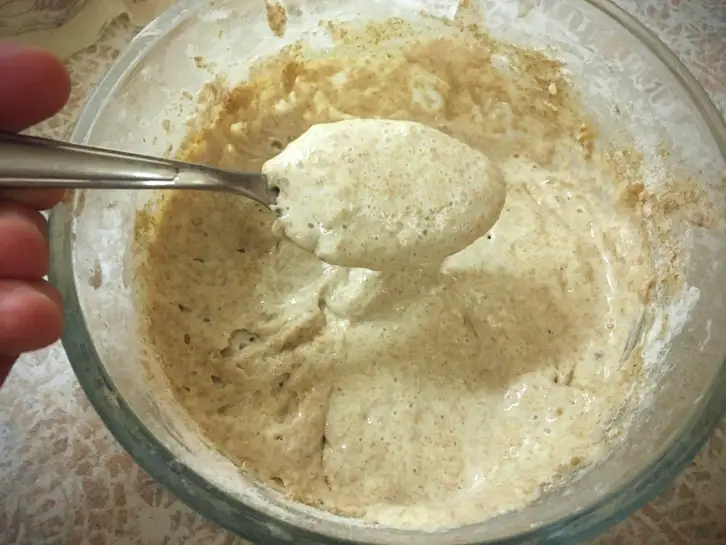
Sourdough starter is a live culture.
It is a beautiful mess of friendly lactic acid bacteria and wild yeast that come together to ferment any flour you put in its path.
Sourdough starter feeds on the sugars and starches found in flour and breaks down the proteins and enzymes that are hard for us to digest.
It also imparts flavour and, more importantly, it makes bread rise.
If you have a sourdough starter on hand, you will never have to worry about running out of yeast!
HOW DOES A SOURDOUGH STARTER WORK?
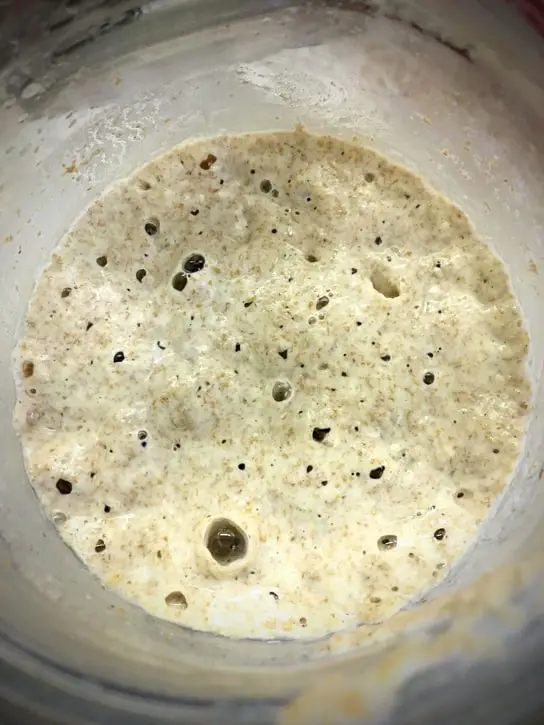
Once you have a sourdough starter going, it’s a pretty simple process.
If you plan on baking a couple of times a week, leave the starter on the counter and feed it once a day or as needed.
Perhaps you bake less frequently, in which case you’ll want to keep it in the fridge.
In any case, when you’re getting ready to bake, feed the starter the night before or the morning of so that you’ll have an active bubbly starter to work with.
Your starter should look like it wants to climb out of its container, which means it will make just about everything else rise, too.
WHERE DO YOU GET A SOURDOUGH STARTER FROM?
If you can, try to get your hands on an established sourdough starter.
An established starter usually has a proven track record and it has a heck of a lot more character than a young ‘un.
Start off by asking your friends, posting a query on social media, or visiting your local bakery (they will probably give it to you for free).
If you look on Kijiji, there’s usually a couple of people selling cultures on the cheap who can help get you started.
Alternatively, you can make a sourdough starter from scratch.
It’s fun, kind of like a science experiment on your kitchen counter. It takes about a week to get it going, sometimes a bit longer.
In the beginning, there will be flour waste as one of the steps involves discarding half of the dough.
If you don’t discard, you will need to feed it unnecessarily large quantities of flour.
If you hate the idea of wasting flour, then I recommend going with the first route of finding an established starter.
HOW DO I MAKE A SOURDOUGH STARTER FROM SCRATCH?
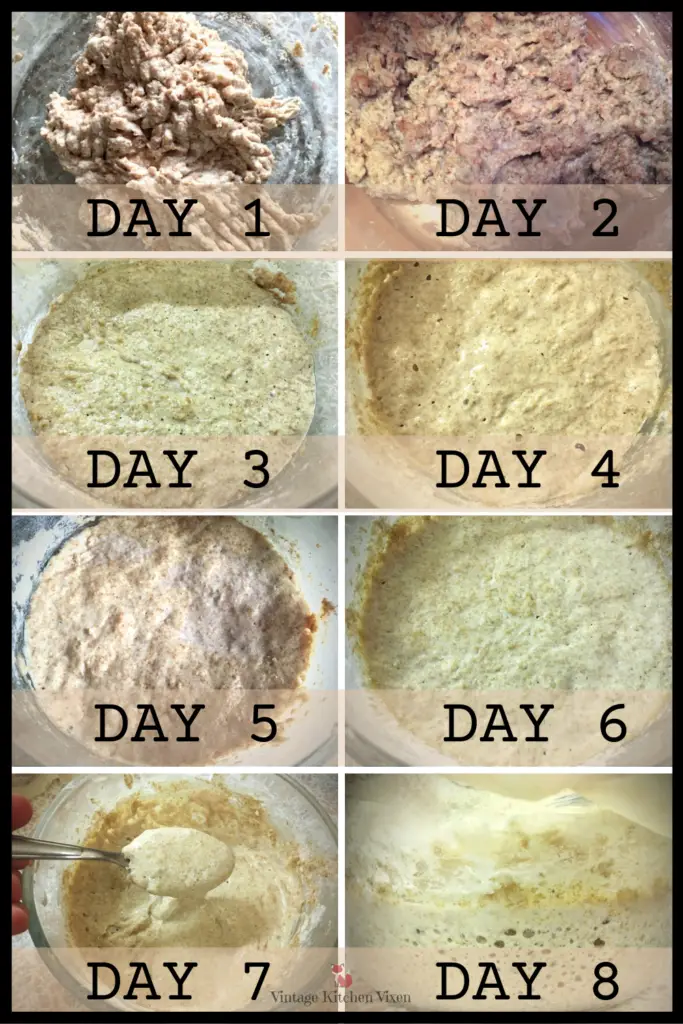
On Day One, measure out equal amounts of flour and water (60 grams each) and stir them together in a glass bowl.
Loosely cover the bowl with a tea towel or a beeswax wrap and leave it alone for 48-hours.
Nothing happens on Day Two. The yeast and bacteria are getting to know each other, so just leave them be.
From Day Three to Day Seven, you will be discarding half of the starter and stirring in the same amount of flour and water, 60 grams each.
By Day Eight, the starter should be ready to use and your discarding days will be over.
If you scroll down further, you will find printable step-by-step instructions walking you through the process.
WHAT KIND OF FLOUR SHOULD I USE FOR MY SOURDOUGH STARTER?
There is a whole lot of debate around what kind of flour works best for a starter.
Some folks swear by white bread flour, claiming it’s more consistent and predictable.
Others insist on einkorn, which, by the way, is not something you will want to begin with as it’s trickier to maintain.
Rye flour is an excellent option because it’s rich in minerals, but whole wheat flour is easier to find, it’s cheaper, and it isn’t as sticky to work with.
I prefer whole wheat to white flour because it has a richer mineral content and there’s more yeast to get the party started.
That being said, if you decide to work with white flour, try to use the unbleached kind.
WHAT KIND OF WATER SHOULD I USE FOR A SOURDOUGH STARTER?
When it comes to fermented foods, I always use filtered, unchlorinated water.
Chlorine is added to tap water to kill harmful microorganisms. According to fermentation father, Sandor Ellix Katz, in his acclaimed book, The Art of Fermentation, the presence of chlorine can inhibit the growth of the friendly bacteria that are needed for a healthy sourdough starter.
If your water is heavily chlorinated, you might find it takes longer to get your sourdough starter going.
One thing you can do is set your water out the day before to give it time to off-gas.
That being said, I got my sourdough starter going using chlorinated water and whole wheat flour. I have also heard of folks having success with distilled water.
THE HYDRATION RATIO
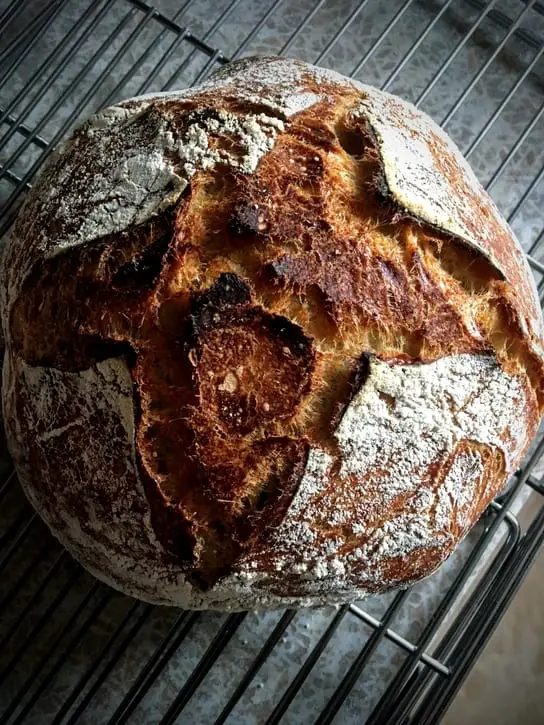
I don't fuss over hydration ratios and this is what I get when I bake sourdough bread.I know I will lose some folks here, and that’s okay.
When it comes to my starter, I’m a bit naughty because I rarely measure out the flour and water once my starter is alive and active.
Why does measuring matter though?
Depending on what kind of bread you want to make, the hydration ratio starts to matter.
What I mean by this is the ratio of flour to water.
As an example, if you’re in the market for country-style loaves, you’ll want a hydration ratio that’s around 65%.
That means that every 100g of flour needs 65g of water.
The higher the hydration, the stickier the dough will be.
A 100% hydration sourdough starter calls for one part flour to one part water.
Does that make sense?
In the beginning, I measured everything.
Eventually, I got tired of bringing out my handy-dandy kitchen scale for every feeding and started winging it.
These days I add just enough flour and water so that my sourdough starter has the consistency of yogurt or a thick pancake batter.
DOES THE TEMPERATURE MATTER?
There’s a general rule in fermentation: heat speeds it up and cold slows it down.
When I was establishing my sourdough starter, I didn’t pay much heed to the temperature.
I made mine in the dead of winter when we turn down our thermostat to 62ºF at night (that’s 16ºC) to save on energy.
Ideally, the starter should be stored around 68-70ºF to give it the best start.
If I had to do it over, I would use a heating pad.
HOW DO I KNOW WHEN MY SOURDOUGH STARTER IS READY?
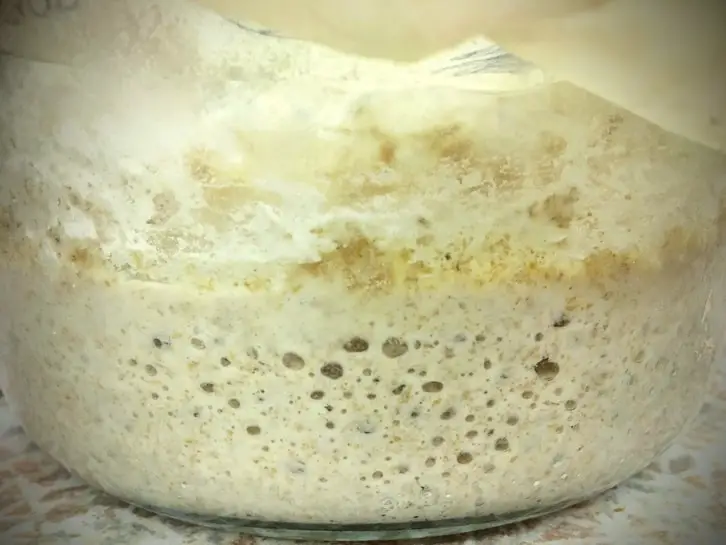
Look at those bubbles!Have seven days passed?
Does your sourdough starter get bubbly after if it’s been fed?
If the answer is yes, then put it to the test!
A flat loaf is a sure sign that your starter needs more time to develop, but don’t throw it out!
Turn that loaf into a bread pudding or a french toast casserole.
Toast it for croutons or breadcrumbs.
Never let good bread (even if it’s a brick) go to waste!
WHAT KIND OF CONTAINER SHOULD I USE FOR STORAGE?
Glass is best, but if you have nothing else, food-grade plastic will do the trick.
Just make sure you use something that can contain the sourdough as it expands.
The last thing you want to find is an oozing jar of sourdough on your kitchen counter.
What a mess!
My favourite containers include clip top jars and mason jars. That being said, this sourdough crock would look adorable on my kitchen counter.
IS IT OKAY IF I MIX MY SOURDOUGH STARTER WITH A DIFFERENT FLOUR WHEN BAKING?
Whether you’re using white, whole wheat, rye, or even einkorn flour sourdough starter, it doesn’t matter what kind of flour you bake with.
It’s basically a greedy flour-hungry blob of a culture and doesn’t care what you give it.
DO I NEED TO DISCARD AFTER IT’S ESTABLISHED?
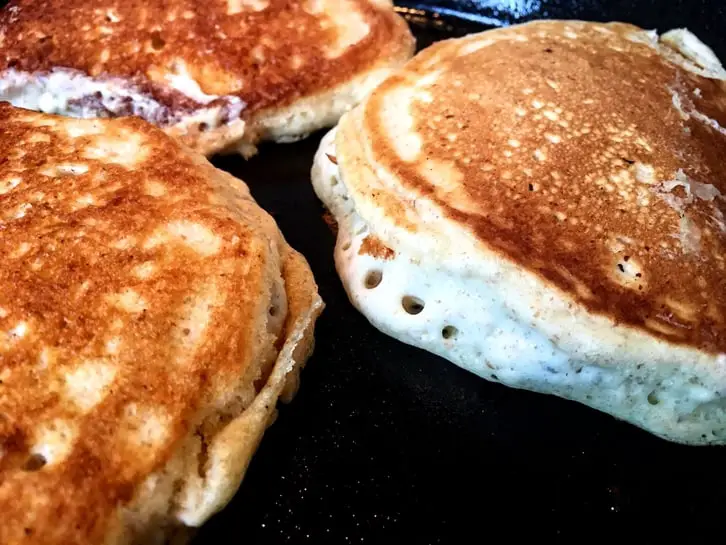
In the very beginning, you will be discarding half of your starter as you build it up.
Once you have a bubbly starter on your hands there’s no need to throw it out.
However, if you don’t use more starter than you make, you’ll eventually have an overflowing jar.
Fortunately, there are all kinds of things you can make with extra sourdough starter, like pancakes, waffles, pizza crust, banana bread, cookies and muffins.
HOW OFTEN SHOULD I FEED MY SOURDOUGH STARTER?
Starters that are kept at room temperature should be fed daily.
A starter that is stored in the fridge can go longer in between feedings.
Some folks recommend feeding refrigerated starter every 5-7 days, others say bi-weekly.
If you bake with sourdough starter on a weekly basis, this won’t be an issue for you.
Nevertheless, there are a couple of giveaways when a starter is hungry.
HOW CAN I TELL IF MY SOURDOUGH STARTER IS HUNGRY?
There are two tell-tale signs when a sourdough starter is hungry.
The first sign is a small pool of brown water on top of the starter.
This brown water is called hooch and it is basically spent energy.
The second sign is the smell.
The hungrier a starter is, the more sour it smells.
HOW MUCH SHOULD I FEED SOURDOUGH STARTER?
The most important thing to remember when feeding a sourdough starter is that it needs to be fed an equal amount of flour.
Therefore, one cup of starter gets fed one cup of flour and as much water as needed.
This results in two cups of sourdough starter the next day.
Sourdough starter can get out of hand that way because the bigger it gets, the more flour it needs to stay healthy.
This is why a lot of sourdough bakers like working with it in smaller amounts.
While it isn’t wise to feed a starter less flour, it can most certainly handle more flour than what’s required.
It really depends on how much you need for a recipe.
WHAT IF A RECIPE CALLS FOR MORE SOURDOUGH STARTER THAN I HAVE?
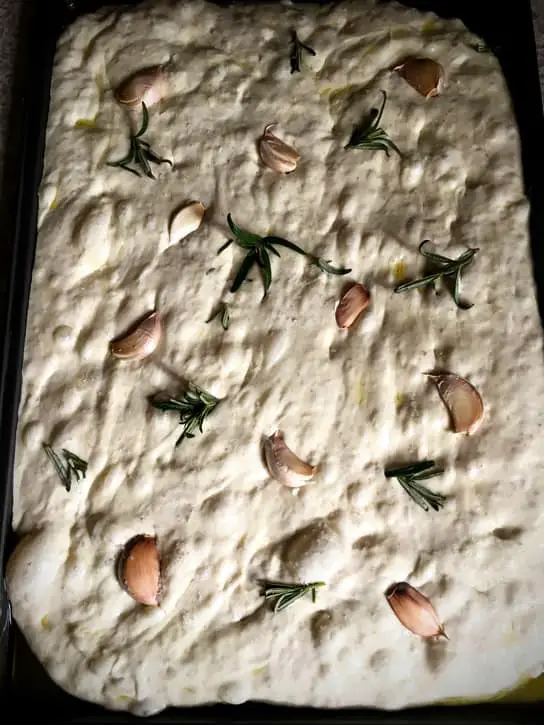
It happens. Sometimes a sourdough recipe calls for a cup of starter but we only have a scant 3/4 cup.
Do you know what could have prevented this?
Studying the recipe before feeding the starter!
When faced with this scenario though, reserve a tablespoon of starter and add the rest to the recipe.
If you want a large amount of sourdough for a recipe, just feed the starter more flour and water.
When feeding your starter, you need to feed it its own weight, at least, but you can also feed it more if needed.
WHAT’S THAT BROWN LIQUID ON TOP OF MY SOURDOUGH STARTER?
That brown liquid on top of your sourdough starter is called hooch!
When you see this pooling at the top, it’s only because the starter is hungry.
You have two choices: stir it back in with fresh flour and water, or pour it out.
IT LOOKS WATERY. WHAT DO I DO?
Add a bit more flour! If the reverse is true, add more water.
It’s all about finding a happy equilibrium.
IS SOURDOUGH STARTER SUPPOSED TO SMELL?
The longer sourdough sits unfed, the more it will smell.
Sometimes it might even remind you of vinegar, beer or acetone!
This is completely normal.
Stir in more flour and water and the smell will go away.
Additionally, when you’re making your sourdough starter from scratch, it’s common for it to smell funky as the bacteria and yeast work together to ferment the flour.
Ferments can be funny, and if your sourdough starter smells like fish (it’s happened), just keep feeding it. It will eventually work itself out!
MY SOURDOUGH STARTER HAS A CRUST
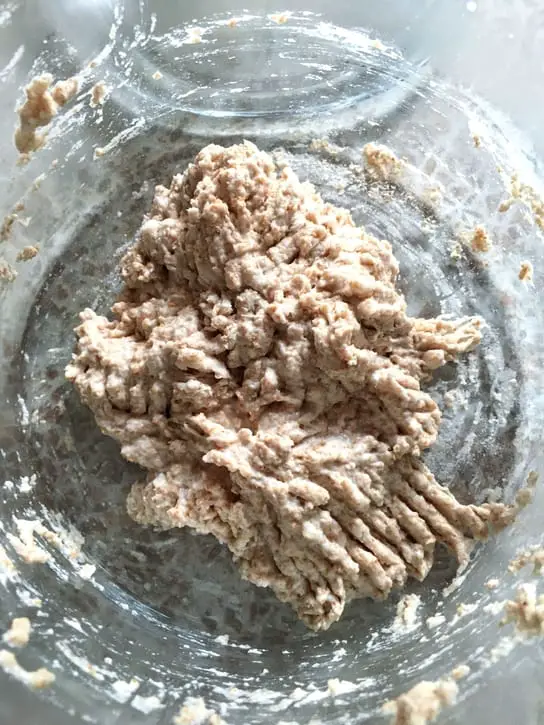
When making a sourdough starter from scratch, it needs a little bit of air to breathe.
That’s why we cover it with a beeswax wrap or a tea towel.
There are yeast and bacteria that are present in the air that will give it the kickstart that it needs.
Therefore, if you find it has a crust when you go to feed it the next day, it’s only from the air getting to it.
Simply scrape it off as you discard.
WHAT HAPPENS IF I FORGET ABOUT MY SOURDOUGH STARTER?
When you store a sourdough starter in the fridge, it’s easy for it to get lost and forgotten, especially if you don’t bake every week.
Unless you find it covered in mould, you might be able to revive it by feeding it regularly.
It might take a week or two for it to bounce back, but just like milk kefir, it is fairly resilient. Cultures are funny like that.
HOW DO I SHARE MY STARTER WITH SOMEONE ELSE?
If you ever want to share the wealth, it is pretty easy to share a sourdough starter.
Simply transfer a little bit to a jar and give the recipient care instructions.
You can also dehydrate sourdough starter, but we’ll save that lesson for another day.
MAKING SOURDOUGH STARTER
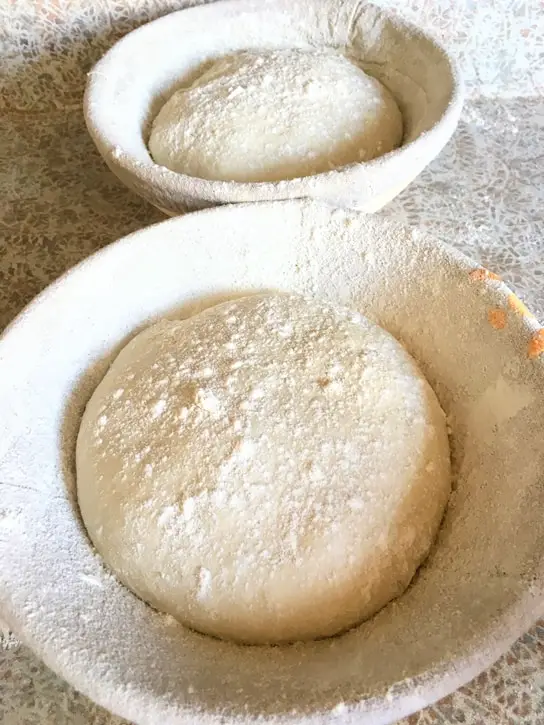
Hopefully, I’ve answered all of your pressing sourdough questions and given you the confidence you need to make your own sourdough starter.
If there’s anything I missed, I’m here to help out!
Just pose your question in the comments below and I’ll do what I can to assist.
But in case you get bitten by the fermentation bug (because that’s what sourdough is), here are some other easy intro projects to help feed your new passion!
Try making this gut-healthy raw sauerkraut, peppery chilli lemon carrot sticks, fermented jalapeños, or your own milk kefir. Yum!
PRINTABLE DIY SOURDOUGH STARTER INSTRUCTIONS
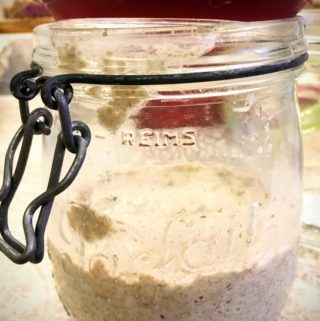
Easy DIY Sourdough Starter
Equipment
- Glass bowl
- Beeswax wrap or a tea towel
Ingredients
- 360 g flour divided over 6 days (60g/day)
- 360 g water divided over 6 days (60g/day)
Instructions
- Day One: Mix 60g flour with 60g water (a half cup each) in a glass bowl and cover with a beeswax wrap or a tea towel.
- Day Two: Let the mixture rest.
- Day Three: Discard half of the dough and stir in another 60g water and 60g flour.
- Day Four: Repeat the previous step through Day Seven.
- Day Eight: Your starter is ready to use!
Notes
- The starter may look bubbly and active from Day 4 onwards. Don’t stop discarding and feeding. However, when it starts smelling sour, you can start using the discard in recipes, like sourdough pancakes, waffles, banana bread, etc.
- It may take longer than a week for your starter to get bubbly and active. Don’t stop discarding and feeding. Sometimes it takes longer for the yeast and bacteria to work together, that’s all.
- Sourdough starter is supposed to smell funky. It’s a ferment, so it’s all part of the process.
- If you intend to bake daily, store the starter on the counter at room temperature and feed it daily, otherwise, store it in the fridge to slow fermentation.
- When sourdough is hungry and needs to be fed, it can get brown water on the surface (called hooch) and it smells sour. Make sure you feed it a 1:1 ratio of flour to starter (at least) to ensure it’s well-fed.
- For a 100% hydration starter, add equal parts water to flour. Alternatively, you can wing it with the water and add enough water for a consistency akin to pancake batter.
SHOP THIS POST
REFERENCE BOOKS
The Art of Fermentation by Sandor Ellix Katz
Artisan Sourdough Made Simple by Emilie Raffa
FOR THE SOURDOUGH STARTER
Glass Clip-Top Jar for storage
Heating Pad for those cold winter nights
PIN IT FOR LATER
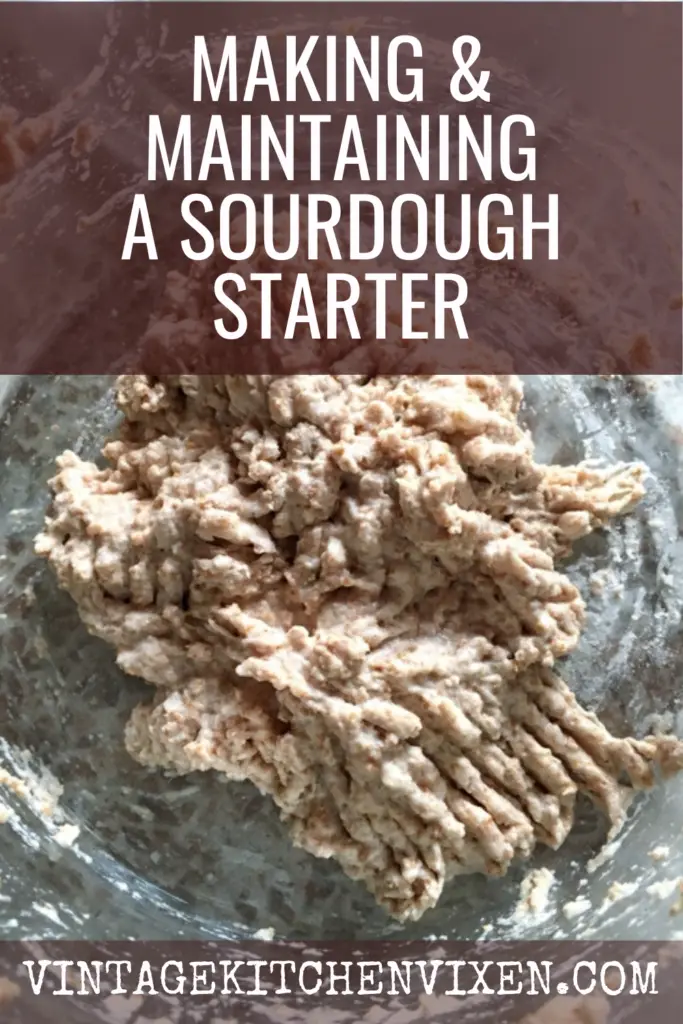
Love and gratitude,


Leave a Reply